Best Tires
Free shipping
Best price guarantee
Special pricing
Financing with Resolve
Easy returns

Winter weather transforms roads into treacherous surfaces that demand specialized equipment for safe navigation. Each year, thousands of accidents occur when drivers underestimate the importance of proper tire selection for cold-weather conditions.
The technology behind winter tires represents decades of engineering advancement specifically designed to combat snow, ice, and freezing temperatures. These specialized tires can reduce stopping distances by up to 40% compared to all-season alternatives, making them essential safety equipment rather than optional accessories.
Smart drivers recognize that investing in dedicated winter tires protects not only their vehicle but also their passengers and fellow motorists. The following guide examines the critical features, performance characteristics, and selection criteria that distinguish truly effective winter tires from inadequate alternatives.
What Are Winter Tires and Why Do They Matter?

Understanding Winter Tire Technology
Winter tires represent a fundamental departure from standard tire construction through their use of specialized rubber compounds that maintain flexibility when temperatures plummet below 45°F. This unique formulation prevents the rubber from hardening and losing grip—a critical safety feature that all-season tires simply cannot match. The molecular structure of winter tire compounds incorporates silica and other advanced materials that create microscopic flexibility even in extreme cold.
The tread design of winter tires features aggressive patterns with deeper grooves measuring 8-10mm compared to the 7-8mm found on typical all-season tires. These channels work in conjunction with thousands of tiny slits called sipes, which create additional biting edges that grip ice and packed snow. Modern winter tires incorporate:
- Zigzag sipes: Create multiple edges that bite into ice for enhanced traction during acceleration and braking
- 3D sipes: Lock together under pressure to maintain tread block stability while providing flexibility
- Wide circumferential grooves: Channel water, slush, and loose snow away from the contact patch
- Directional tread patterns: Optimize forward traction and snow evacuation through V-shaped designs
Every legitimate winter tire displays the three-peak mountain snowflake (3PMSF) symbol on its sidewall—a certification that requires passing rigorous snow traction testing. This industry-standard marking distinguishes true winter tires from all-season tires with M+S (mud and snow) ratings that lack the specialized compounds and construction necessary for severe winter conditions.
The Difference Between Winter and All-Season Tires
All-season tires compromise performance across multiple conditions, resulting in adequate but not exceptional capability in any single environment. When temperatures drop below 45°F, the rubber compounds in all-season tires begin to harden, reducing their ability to conform to road irregularities and maintain grip on slippery surfaces. This hardening effect becomes progressively worse as temperatures continue to fall, creating a dangerous situation where tires lose traction precisely when drivers need it most.
Testing data reveals that winter tires provide up to 50% better traction on snow and ice compared to their all-season counterparts. In practical terms, this translates to:
- Braking distances: A vehicle traveling at 30 mph on ice can stop 30-40% shorter with winter tires
- Acceleration capability: Winter tires enable confident starts from stops on slick surfaces, where all-seasons spin helplessly
- Cornering stability: Lateral grip improvements of 25-35% help maintain control through turns
- Hydroplaning resistance: Superior water evacuation reduces the risk of losing contact with wet roads
The performance gap between winter and all-season tires mirrors the difference between wearing snow boots versus sneakers in a blizzard. While sneakers might suffice for a quick dash across a snowy parking lot, they become dangerously inadequate for extended exposure to winter conditions. Similarly, all-season tires may handle light frost or occasional snow flurries, but they cannot provide the specialized performance required when winter weather turns severe.
Best Winter Tire to Buy in 2025
Continental VikingContact 8
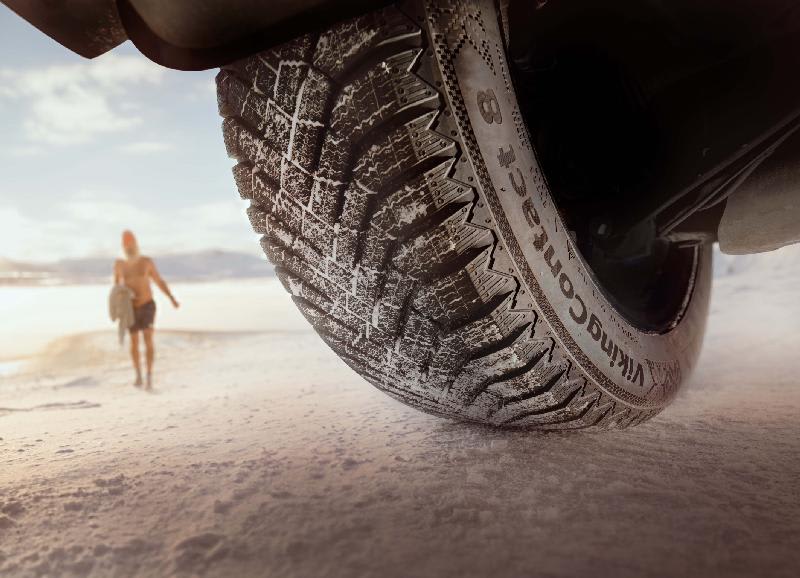
In this list of best winter tires, our first pick is the Continental VikingContact 8, a premium studless winter tire, which is rated a great overall SimpleScore rating of 8.8 and is Three Peak Mountain Snowflake certified for use in extreme winter conditions. The tire’s average starting price is $116. It is specially optimized for excellent winter traction on snow or ice, reduced tread noise levels, reduced rolling resistance, enhanced ride comfort, improved braking performance, and better fuel efficiency/drive range.
Get Continental VikingContact 8 tires at the best deals for your vehicle here
Bridgestone Blizzak 6
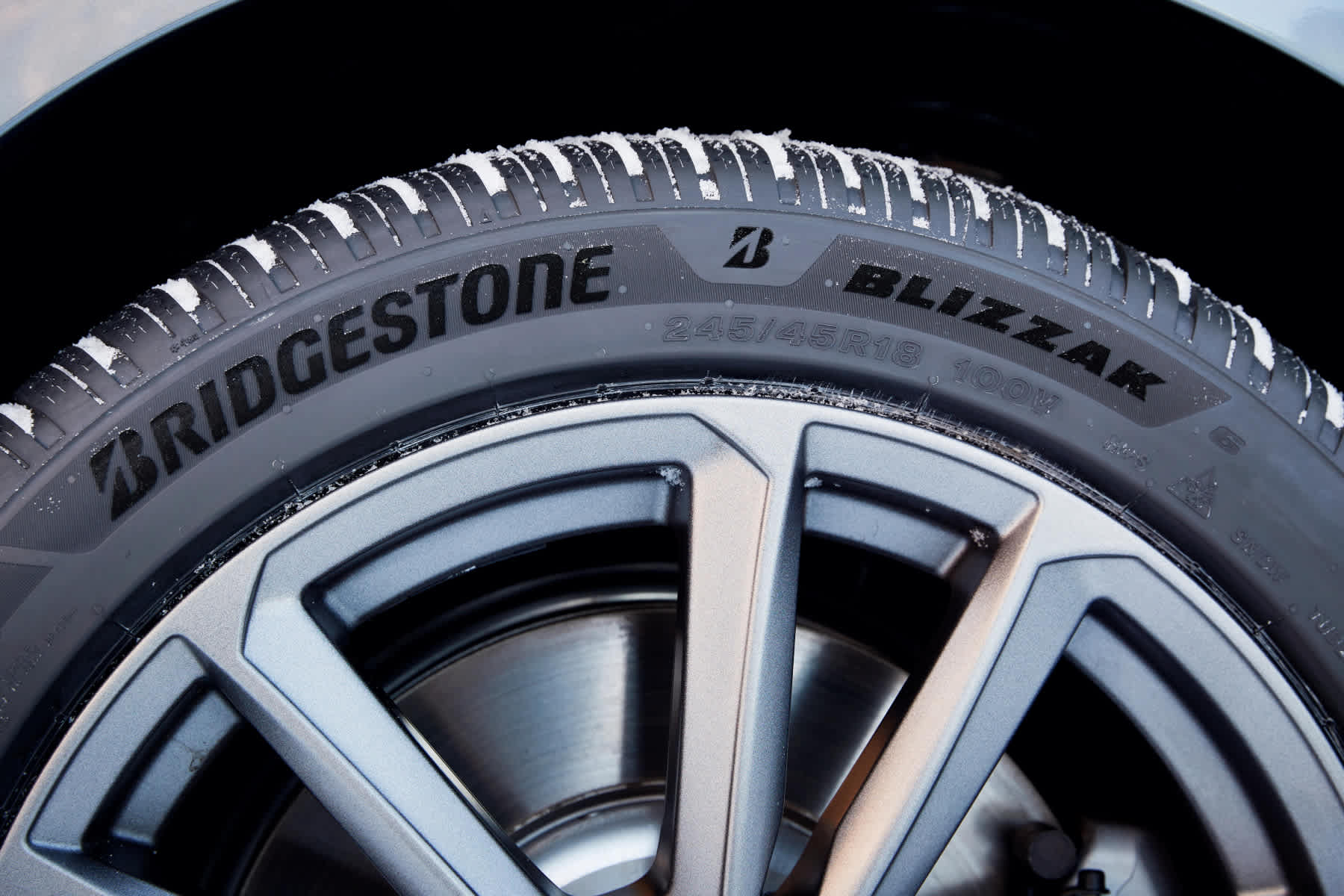
The Bridgestone Blizzak 6 is another outstanding choice in the winter tire category. This tire is among the best offerings in the country for driving on snowy or icy roads. Suitable for use in sub-freezing conditions, the Blizzak 6 also features a studless tread pattern with great details and an increased number of sipes to improve braking performance and surface-biting ability in wet, snowy, and icy conditions. It is Three Peak Mountain Snowflake certified for use in sub-freezing winter conditions and is rated an impressive overall SimpleScore rating of 8.6. The tire features the brand’s patented ENLITEN technology for longer service life. It is also engineered for excellent winter traction, responsive handling, and even wear. The average starting price of this world-class winter tire is $189.
Get Bridgestone Blizzak 6 tires at the best deals for your vehicle here
Nokian Hakkapeliitta 10
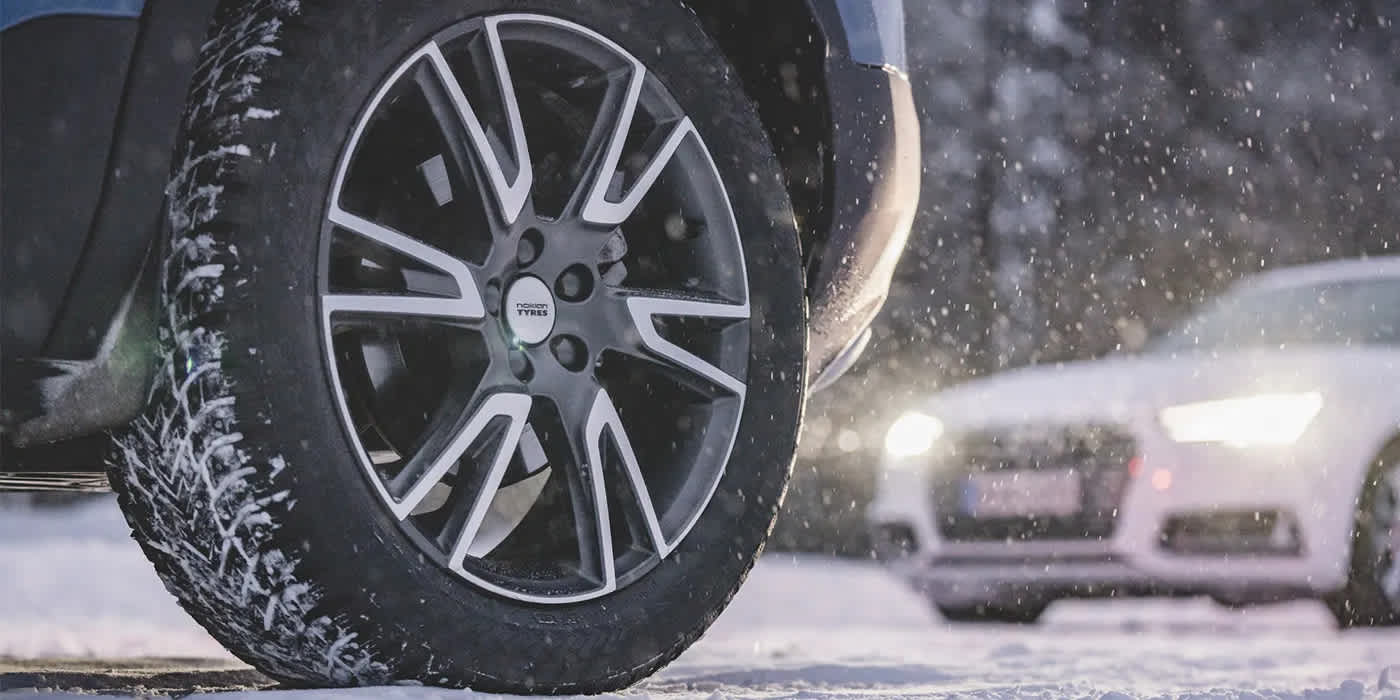
While brands like Continental and Bridgestone lead the tire industry, Nokian is an exceptional brand that has the ability to tease its top-tier counterparts with its Hakkapelitta 10 studded winter tire. Rated an exceptional 9.0 overall SimpleScore rating, this winter tire is highly promising, especially when driving on thick layers of snow or ice. Since it is a studded tire, its use on the roads is subject to the law. Make sure that you confirm your local laws pertaining to the use of studded tires. It is Three Peak Mountain Snowflake certified, promising confident driving in winter weather conditions, and is specially optimized for superior traction and grip on ice and snow, precise and stable handling, increased driving comfort, low tread noise levels, long-lasting tread life, and improved fuel efficiency.
Get Nokian Hakkapeliitta 10 tires at the best deals for your vehicle here
Hankook Winter i*cept iZ3 (W636)
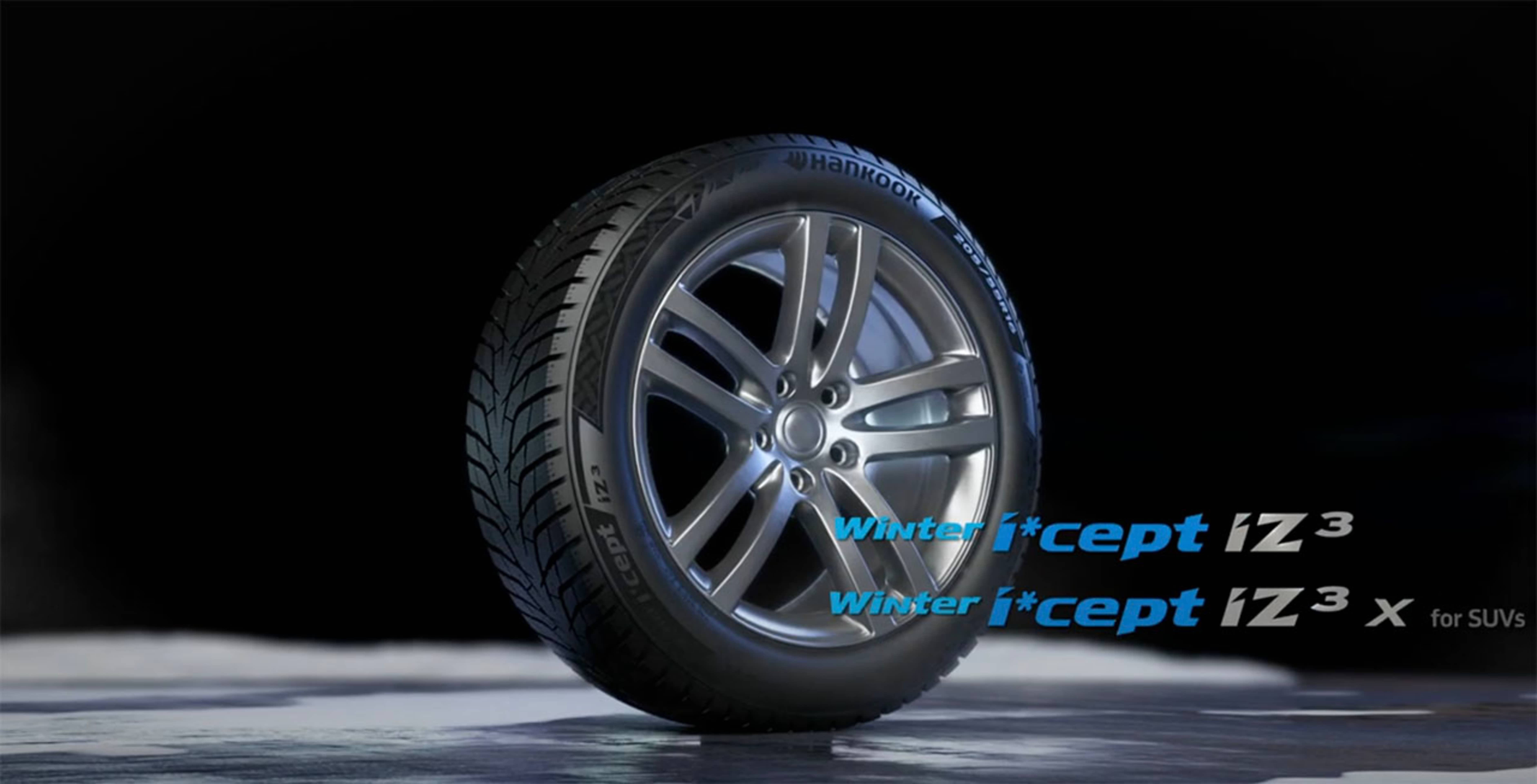
If you are specifically in search of value and winter weather performance, then you need something like the Hankook Winter i*cept iZ3 (W636). This winter tire earns a decent 8.2 overall SimpleScore rating and is specially optimized to provide confident grip and traction in wintry conditions. The construction of the tire is durable, and the Three Peak Mountain Snowflake certification brings assurance to drive with confidence on thick layers of snow or ice. It is also M+S (Mud and Snow) approved for increased performance on muddy and snowy roads during the winter months. Solid winter traction, improved braking performance, better ice acceleration, hydroplaning and slushplaning resistance, low rolling resistance, and longer tread life are some of the key strengths of this winter tire. The tire’s average starting price is $94.
Get Hankook Winter i*cept iZ3 (W636) tires at the best deals for your vehicle here
Nexen Winguard Winspike 3
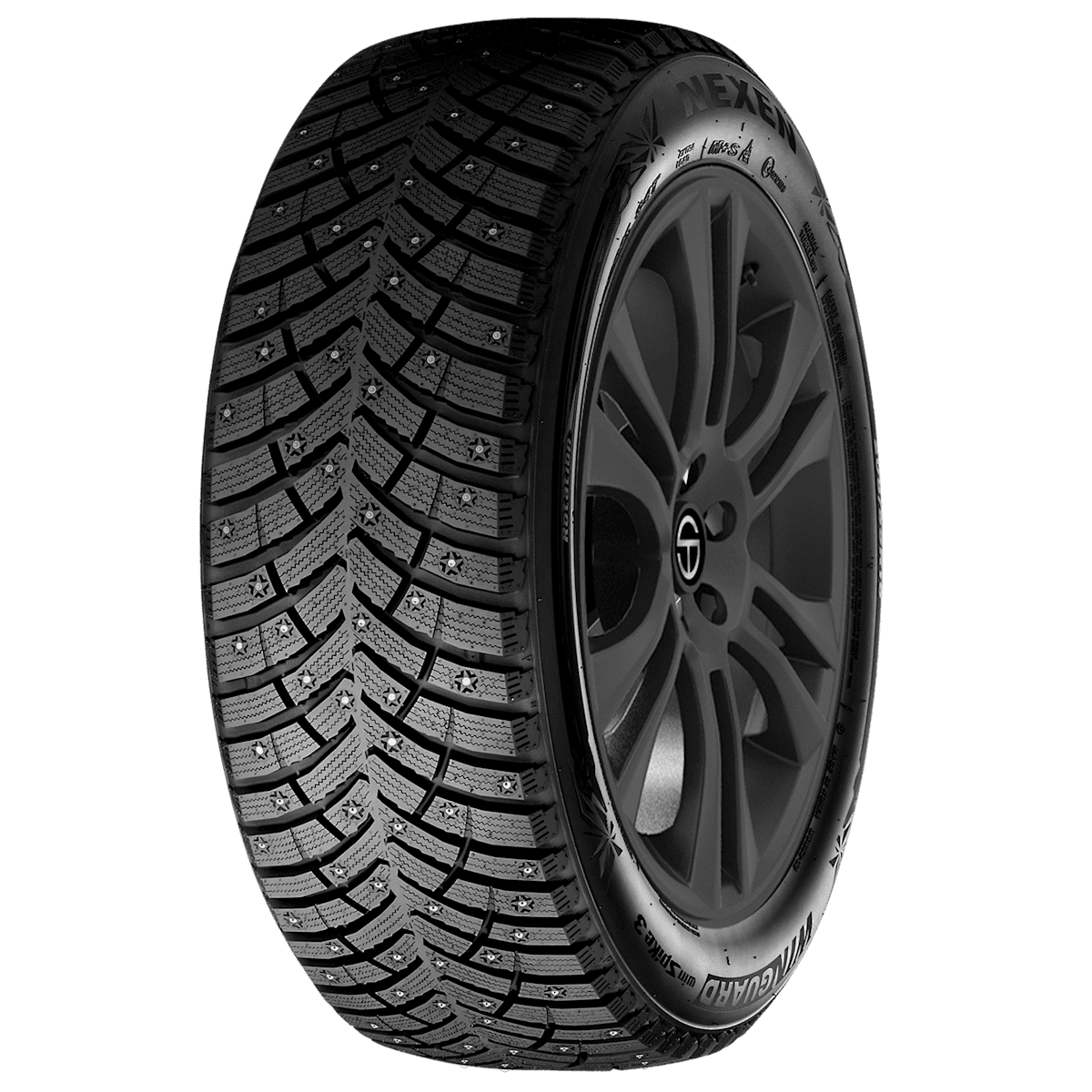
The Nexen Winguard Winspike 3 makes it to this list of best winter tires at #5 and is best suited for those drivers who want a great budget-friendly option to drive with greater confidence on snow or ice in temperatures below 45 degrees Fahrenheit. It features a studdable tread pattern, which means it can be pinned with #12 TSMI studs (wherever permitted by law) to gain extra traction and grip on deep snow or ice. It is severe snow rated with Three Peak Mountain Snowflake certification, and secures an impressive overall SimpleScore rating of 8.4. The tire’s average starting price is $76, and the manufacturer has optimized it for better traction on snow or ice, improved ride comfort, responsive handling, and in-time braking performance.
Get Nexen Winguard Winspike 3 tires at the best deals for your vehicle here
How Winter Conditions Affect Your Vehicle's Performance
Winter roads present a unique set of challenges that demand specialized equipment to ensure safety. The cold affects every aspect of driving, from traction to handling, making it crucial to choose the right tires for the season.
Temperature Impact on Tire Performance
Standard tires struggle as temperatures dip, losing their ability to grip the road effectively. Below freezing, the compounds in these tires stiffen, which can lead to a loss of control and longer stopping distances. Winter tires, however, are crafted to remain supple in cold weather, adapting to icy and snowy surfaces to provide reliable traction.
Winter conditions bring hazards like black ice and slushy roads, which can compromise vehicle stability. Black ice, in particular, is a hidden danger that makes roads slick and unpredictable. The advanced design of winter tires includes deeper treads and specific patterns to combat these issues, offering consistency and control.
Safety Risks of Using Wrong Tires in Winter
The use of inappropriate tires in winter significantly heightens safety risks. Longer stopping distances can quickly turn minor incidents into serious accidents. Proper winter tires offer the necessary grip for safe maneuvering and stopping, ensuring more secure travel.
Slushy conditions increase the likelihood of hydroplaning if tires aren't designed to handle water efficiently. Winter tires feature grooves that channel slush and water away from the tire, reducing skid risks. It's vital to remember that while all-wheel drive aids in traction, it doesn't enhance braking—only the right tires can ensure safe halts.
Key Features to Look for in Top-Rated Winter Tires
Winter tires incorporate advanced technologies that set them apart from all-season alternatives. These features ensure safety and performance during harsh weather, helping drivers navigate icy and snowy roads with confidence.
Essential Winter Tire Technologies
- Multi-cell compound technology: This innovative rubber compound absorbs water on ice surfaces, enhancing grip. By reducing the thin film of water that forms on ice, these tires maintain better traction.
- Biting edges: Tiny cuts in the tread create edges that improve grip on snow-covered roads. These features enhance flexibility, allowing tires to adapt to varying surfaces.
- Optimized tread patterns: Designed to maximize traction, these patterns efficiently channel snow and slush away from the contact area. The grooves are engineered to maintain stability and control.
- Reinforced sidewalls: Built for durability, these sidewalls withstand rough winter conditions. They prevent damage from potholes and curbs, ensuring tire longevity and safe handling.
Performance Characteristics That Matter Most
- Ice braking capability: This is the most crucial safety feature for winter driving. High-quality winter tires provide superior stopping power on icy surfaces, reducing the risk of accidents.
- Snow traction: Essential for confident acceleration and hill climbing, snow traction ensures vehicles can move smoothly over snowy terrain. The deep grooves and specialized compounds grip snow effectively.
- Wet weather handling: Managing melting snow and winter rain requires excellent water evacuation. Top-rated winter tires maintain control in wet conditions, preventing hydroplaning and skidding.
- Tread life expectations: Quality winter tires should last 3-4 seasons with proper care. Regular maintenance, such as pressure checks and rotations, extends their lifespan, ensuring consistent performance over time.
Winter driving demands the right equipment, and selecting proper tires represents one of the most important safety decisions you'll make for your vehicle. The combination of advanced rubber compounds, specialized tread designs, and proven winter technologies can transform treacherous conditions into manageable journeys. When you're ready to upgrade your winter driving safety, we invite you to shop for tires online and find the best deals where our extensive selection and expert guidance help match you with the perfect winter tires for your specific needs.
Ready to find the perfect tires?
Search By